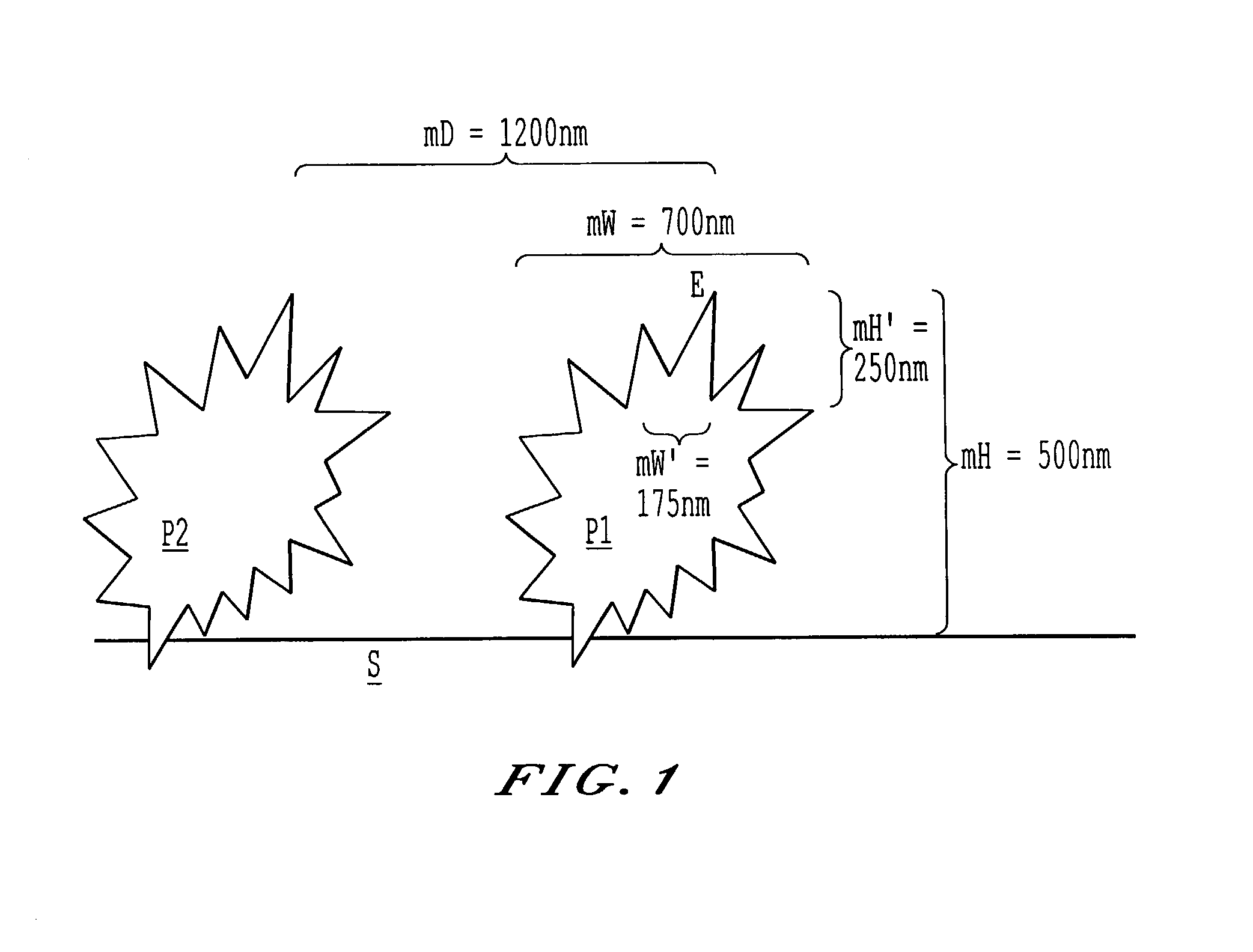Surfaces rendered self-cleaning by hydrophobic structures, and process for their production
a technology of hydrophobic structure and surface, applied in the field of self-cleaning surfaces, can solve the problems of poor wetting, lack of stability of self-cleaning surfaces, time-consuming and expensive cleaning of surfaces,
- Summary
- Abstract
- Description
- Claims
- Application Information
AI Technical Summary
Benefits of technology
Problems solved by technology
Method used
Image
Examples
example 2
[0052] A powder coating (FREOPOX EKP-7, Emil Frei GmbH & Co.) was doctor-applied cold to give a layer of 200 .mu.m thickness on a nickel plate, and sprinkled with a hydrophobic Aerosil (R 8200, Degussa AG). This mixture and the nickel plate were exposed for 3 minutes to a temperature of 180.degree. C. After cooling, there was only a slight improvement in the run-off behavior of water.
example 3
[0053] The experiment of Example 2 was repeated, but a metal roller was used to press the Aerosil R 8200 into the molten surface coating. The material was post-annealed, again for 3 minutes. The run-off behavior of the cooled sheet was only slightly improved over that of the pure powder coating.
example 4
[0054] The experiment of Example 2 was repeated, but a hot-melt adhesive (Vestamelt P 06, Degussa AG) was used instead of the powder coating. After cooling there was only a slight improvement in the run-off behavior of water.
PUM
| Property | Measurement | Unit |
|---|---|---|
| size | aaaaa | aaaaa |
| size | aaaaa | aaaaa |
| height | aaaaa | aaaaa |
Abstract
Description
Claims
Application Information
 Login to View More
Login to View More - R&D
- Intellectual Property
- Life Sciences
- Materials
- Tech Scout
- Unparalleled Data Quality
- Higher Quality Content
- 60% Fewer Hallucinations
Browse by: Latest US Patents, China's latest patents, Technical Efficacy Thesaurus, Application Domain, Technology Topic, Popular Technical Reports.
© 2025 PatSnap. All rights reserved.Legal|Privacy policy|Modern Slavery Act Transparency Statement|Sitemap|About US| Contact US: help@patsnap.com


